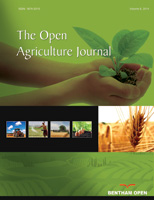
Ricerca & Innovazione > Contributi Scientifici
Giorgi A., Pentimalli D., Giupponi L., Panseri S.
Saffron (Crocus sativus L.) is a perennial herbaceous geophyte in the Iridaceae family. It propagates vegetatively by corm. All saffron production processes are generally conducted by hand: from bulb implantation, harvesting of flowers to stigma separation. Saffron is the most expensive spice in the world because of the intensive hand labour required for production. The increasing interest in Crocus sativus cultivation and production in the Italian Alpine area could increase revenues for the rural farming economy. Twenty eight dried saffron samples were collected from different farmers of the Italian Alpine area (Lombardia, Trentino Alto Adige, Piemonte and Veneto) between November 2015 and March 2016. Each sample was processed to determine their moisture content and amount of picrocrocin, crocins and safranal using the methods established by the International Organization for Standardization for saffron (ISO 3632 1,2:2010-2011). Over 82.1 % of the samples analyzed were ranked in the highest quality category of the ISO 3632. A high quality saffron product can be produced in the Italian Alpine area suggesting that this crop could serve as a sustainable source of economic revenues to diversified farms in the Alps.
